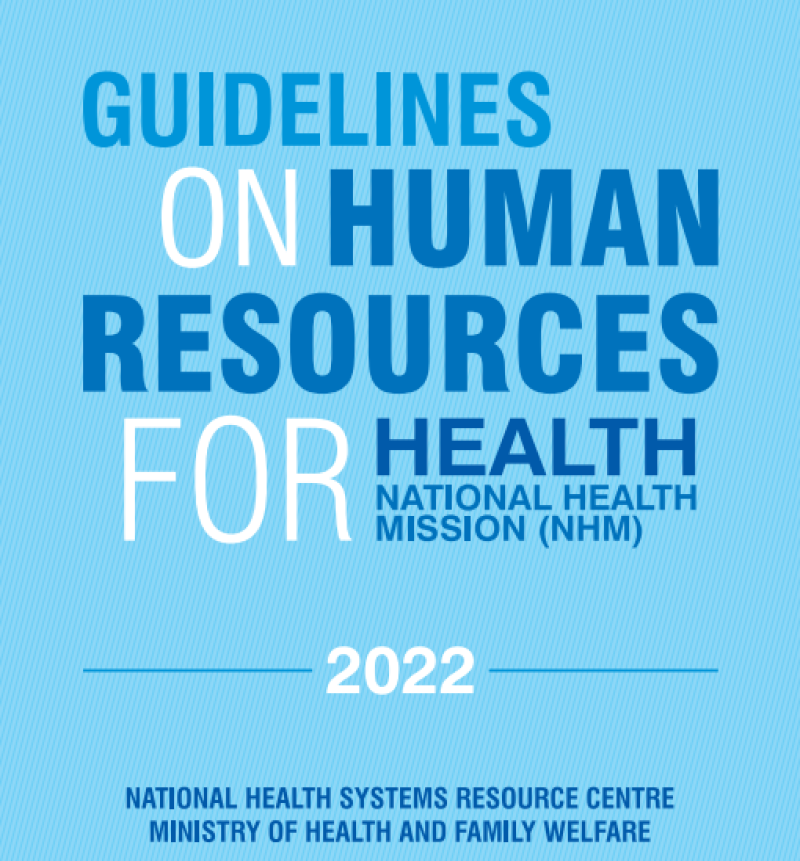Under the National Health Mission, the Ministry of Health and Family Welfare provides technical and financial support to the States/UTs to strengthen the public healthcare system including recruitment of health care professionals in rural and underserved areas and modernize and upgrade the medical equipment and technologies based on the proposals received in the form of Programme Implementation Plans (PIPs) under National Health Mission. Government of India provides approval for the proposal in the form of Record of Proceedings (RoPs) as per norms & available resources.
Under NHM, following types of incentives and honorarium are provided for encouraging doctors to practice in rural and underserved areas of the country:
- Hard area allowance to specialist doctors for serving in rural and remote areas and for their residential quarters so that they find it attractive to serve in public health facilities in such areas.
- Honorarium to Gynecologists/ Emergency Obstetric Care (EmoC) trained, Pediatricians & Anesthetist/ Life Saving Anaesthesia Skills (LSAS) trained doctors is also provided to increase availability of specialists for conducting Cesarean Sections in rural & remote area.
- Incentives like special incentives for doctors, incentive for Auxiliary Nurse and Midwife (ANM) for ensuring timely Antenatal Checkup (ANC) checkup and recording, incentives for conducting Adolescent Reproductive and Sexual Health activities.
- States are also allowed to offer negotiable salary to attract specialist including flexibility in strategies such as “You Quote We Pay”.
- Non-Monetary incentives such as preferential admission in post graduate courses for staff serving in difficult areas and improving accommodation arrangement in rural areas have also been introduced under NHM.
- Multi-skilling of doctors is supported under NHM to overcome the shortage of specialists. Skill upgradation of existing HR is another major strategy under NRHM for achieving improvement in health outcomes.
The government has implemented several initiatives to enhance the quality of care in public health facilities. “Mera Aspataal,” a patient feedback system, has been implemented at the district hospitals. A framework on behaviour standards for patient-centric care and value-driven healthcare services, as well as standards for patient responsibilities, were developed and shared with the states. The NHM budget is used to provide scope for professional growth and continuous professional learning for the Human Resources for Health (HRH).
The National Health Mission (NHM) has established guidelines to enhance the behavior and professionalism of healthcare staff in government hospitals, ensuring that patients are treated with respect, empathy, and care. The guidelines for Human Resources for Health (HRH) is available in public domain.
The government has initiated various schemes/programmes to modernize and upgrade the medical equipment and technologies in public hospitals to provide accurate and efficient healthcare services:
- Medical equipment is an integral part of healthcare service delivery and is crucial for instituting early diagnosis and prompt treatment leading to improved health outcomes. Indian Public Health Standards (IPHS)-2022 has laid down the minimum standards for equipment availability at each level of healthcare.
- Under NHM, the Ministry provides support to the States/UTs for strengthening of diagnostic services including diagnostic equipment for health facilities as per IPHS norms based on the gap assessment done by the states/UTs.
- The e-Sanjeevani platform, launched by the Ministry of Health and Family Welfare (MoHFW), enables remote consultations, reducing the burden on physical healthcare facilities. The platform consists of two modules: (i) e-Sanjeevani OPD: Facilitating doctor-to-patient consultations remotely; and (ii) e-Sanjeevani AAMs: Connecting Ayushman Arogya Mandirs (AAMs) with specialist doctors for better healthcare accessibility in remote areas. Total 31.86 crores Teleconsultations has been conducted till 31.12.2024.


